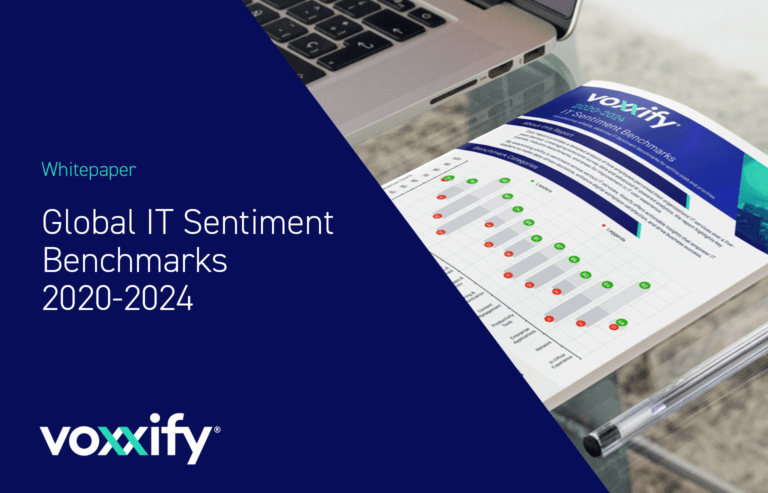Many corporate IT departments offer support to business end users via a ticketing system.
But, beware – the metrics you track may not tell the full story.
After more than 20 years working in corporate IT departments, I’ve seen how the machine works from the inside. As a user experience leader, I’ve also seen it from the outside. Often there is a gap between what IT can measure and what the business is experiencing. I call this the IT Experience Gap. But what is it, and how can we close it?
Large corporate IT departments support tens of thousands of incidents and requests per month. To maintain quality standards, a survey is sent out after each ticket is closed, and the result is a Customer Satisfaction (CSAT) score. In the best IT departments this Transactional CSAT score can be more than 95%. Pretty good, right?
Not necessarily. Firstly, that 95% score represents the average of all tickets that are closed. Typically, the bulk of these tickets are simple requests such as password resets, so this number can mask the trickier issues such as blue screens, connectivity, conferencing audio quality, and so on. Secondly, tickets do not represent all of the issues business end users are having with IT, such as usability. There is an IT Pain Threshold that needs to be exceeded before many end users will open tickets. Tickets and transactional CSAT do not tell the full story. To get the full story, consider gathering a regular IT Experience Score from your business end users. I know: as IT professionals you’re already over worked (and under resourced), so it seems like this is just asking for more work. But, put yourself in the end user’s shoes for a moment. If your laptop is slow starting up in front of a customer, who do you tell? If it takes 2-3 attempts to connect to VPN each day, who do you go to? If your payroll app is slow to refresh, do you open a ticket? What if IT reached out every now and then to ask, “How are you getting on? What’s good, and what could be better?”
To get the full story, consider gathering a regular IT Experience Score from your business end users. I know: as IT professionals you’re already over worked (and under resourced), so it seems like this is just asking for more work. But, put yourself in the end user’s shoes for a moment. If your laptop is slow starting up in front of a customer, who do you tell? If it takes 2-3 attempts to connect to VPN each day, who do you go to? If your payroll app is slow to refresh, do you open a ticket? What if IT reached out every now and then to ask, “How are you getting on? What’s good, and what could be better?”
Traditional IT was measured on cost. Modern IT is measured more and more on experience. The best IT departments use Active Listening to anticipate and respond to changing business needs, and move beyond being the break-fix guys to become trusted business advisors.



